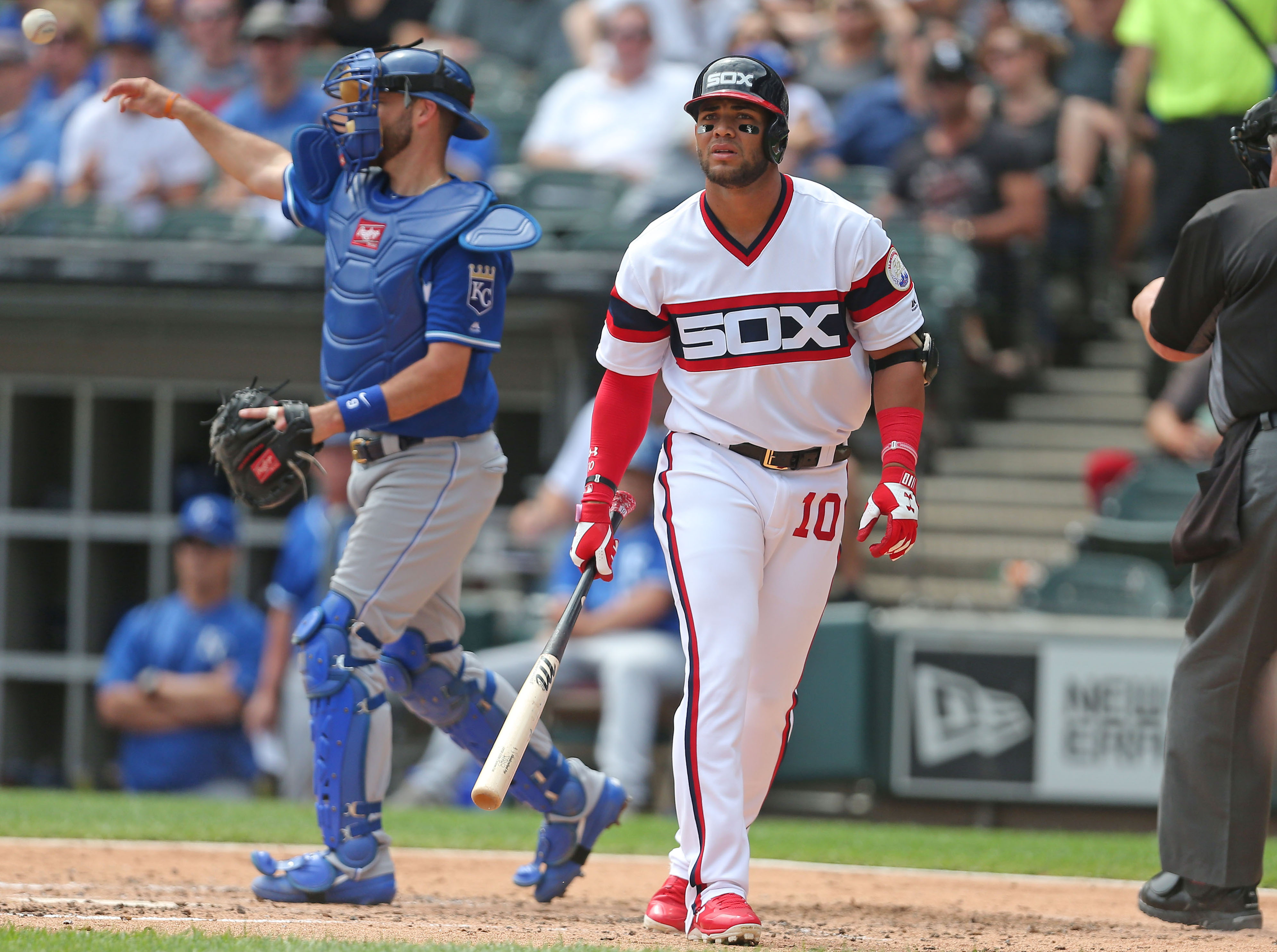The pitch is delivered on the black, barely touching a corner of the zone. An umpire emphatically rings a batter up. The batter sluggishly slinks back into the dugout, and the satisfied pitcher smiles to himself. A backwards “K” is placed in the official scorekeeper’s book, along with those around the stadium. Such is the anatomy of a looking strikeout. It’s incredibly frustrating for the batter, and all too gratifying for the pitcher.
Mike Pelfrey and Yoan Moncada are very different players. Pelfrey is a veteran pitcher who was brought to Chicago simply to provide innings of work regardless of the production he provided. Moncada was the prized prospect acquired in the Chris Sale trade. He’ll be on the White Sox for many years to come, hopefully producing at a high level. Despite being almost entirely different players, there is one thing both Pelfrey and Moncada have in common: they put a lot of backwards Ks in the scorebook.
There has been a lot of hand wringing about the start to Moncada’s White Sox career. He has struck out in 31 of his first 89 plate appearances with a .151 ISO that doesn’t exactly make up for the lack of contact. Moncada has oft been considered a five tool player, but the one tool that has always lagged behind is his hitting ability. If he could cut down on the strikeouts, he could really tap into his great potential. In that sense, striking out about a third of the time over his first 100 plate appearances or so is quite concerning.
Concern can be tempered, however, by noting that a significant portion of Moncada’s strikeouts have come in the looking fashion. Of his 31 strikeouts, he’s watched 11 of them pass him by. That’s 35.5 percent, seventh highest in all of baseball. It’s over a much smaller sample than the rest, but it does make the strikeout numbers look a little more bearable. The names above him include Joey Votto, Anthony Rendon, and Travis Shaw, who are known to be very discerning hitters. With a patient approach comes getting caught looking.
Moncada has shown a great amount of patience at the plate, walking 15.7 percent of the time to help boost his OBP to .348 despite having just a .205 batting average. And sometimes, maybe too often, that patience has resulted in called third strikes. Yes, Moncada still isn’t making contact at a rate that is preferred. However, he’s been caught looking a good percentage of the time, showing his advanced approach at the plate.
It’s probably not an unfair assumption that the number of looking strikeouts will drop as Moncada adjusts to major league pitching and the strike zone in the big leagues. If he can lower his strikeout rate even just below 30 percent, his short season will look even better. He can do so with ease if he adjusts to the boundaries of the major league strike zone. Another assumption here is that swinging strikeouts are inherently worse than ones that simply pass by. Swinging strikes say more about Moncada’s occasional inability to make contact by swinging too hard while getting caught looking says a lot about the pitcher hitting his spots, or even the umpire making an error. Moncada needs to improve his discernment of close strikes, but the fact that he hasn’t been killed by swinging strikes is a great sign moving forward.
Pelfrey was brought in by the White Sox to provide innings for a team desperately in need of them, especially when starters went down to injury and were eventually traded away. He surprisingly performed well for a while, but his ERA currently sits at 5.23 while striking out just 14.3 percent of the batters he has faced. His stuff has not impressed.
Perhaps the complete lack of stuff has frozen hitters, because Pelfrey holds the third best looking strikeout rate in baseball at 40.3 percent. The veteran hasn’t seen much success this season in general, but that makes it even more interesting that he’s caught so many batters looking. 25 out of 62 total strikeouts on the season isn’t quite life changing, but it remains an odd mystery that he’s been able to leave batters in such shock with two strikes.
Moncada and Pelfrey couldn’t be more different. One is a hitter, and the other is a pitcher. One is a veteran; the other is the No. 1 prospect in baseball at just 22 years old. And yet, they share this odd similarity. It doesn’t mean anything to compare the two; it’s just an odd coincidence in an odd season.
Moncada has struck out a concerning amount during his first couple weeks in a White Sox uniform. The fact that he’s done so looking over 30 percent of the time is a small comfort. It’s something he can easily improve upon, and it says a lot about his advanced approach. Pelfrey hasn’t notched very many strikeouts this season, but nearly half of them have been looking. He’s caught hitters off guard, using that to his advantage. However, it hasn’t led to any success at all for the veteran.
Strikeouts are always frustrating for the batter while being satisfying for the pitcher. When they are in the looking fashion, those emotions can become even more enhanced. A great number of looking strikeouts also mean drastically different things for hitters and pitchers. For a hitter, it’s often a sign of a good approach that ends in a poor result because of a close pitch. For a pitcher, it’s often an indicator of throwing the ball in the zone a lot, occasionally catching hitters off guard. It’s an encouraging sign for Moncada and a concerning one for Pelfrey, which aligns with the common assumptions about both players. Moncada has a bright future while Pelfrey is a veteran in the last legs of his career.
Lead photo credit: Dennis Wierzbicki-USA TODAY Sports
